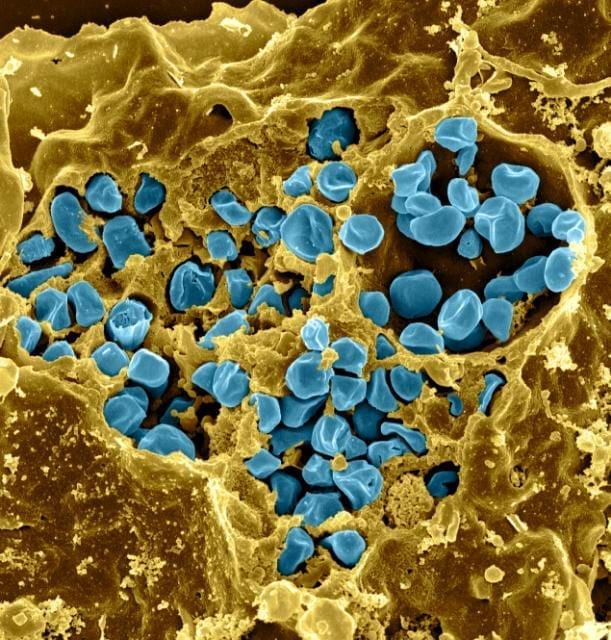Research led by scientists at St. Jude Children’s Research Hospital has identified key molecules that trigger the immune system to launch an attack on the bacterium that causes tularemia.
The team, led by Thirumala-Devi Kanneganti, Ph.D., a member of the St. Jude Department of Immunology, found key receptors responsible for sensing DNA in cells infected by the tularemia-causing bacterium, Francisella.
Tularemia is a highly infectious disease that kills more than 30 percent of those infected, if left untreated. It can be readily transmitted by air, insect bites or through contaminated food or water.
“Understanding the fundamental biology of how our immune system works will lead to the development of more effective drugs and vaccines,” said Kanneganti, corresponding author on the paper. The new findings also revealed how immune cells switch on genes that activate microbe-killing machinery called the AIM2 inflammasome.
The inflammasome is a complex of proteins that is a dedicated killing machine for bacteria and viruses. The inflammasome that attacks the tularemia bacterium is triggered by the sensor protein AIM2 that recognizes the tularemia DNA.
Previous studies indicate that both Francisella DNA and viral DNA activate AIM2 in the cell. The mystery was how different bacteria or viruses release their DNA into the infected cell to activate AIM2.
In the new studies, the researchers found that Francisella DNA is initially detected by a DNA sensor, cGAS, which specifically engages a gene-activating protein called IRF1 in the cell. Importantly, IRF1 triggers production of a group of proteins, called GBPs, that literally “mobs” the invading bacterium by surrounding and shredding it. The dying bacterium releases even more DNA and subsequently activates the DNA sensor AIM2 to further fuel the immune system, ultimately conquering the infection. Researchers still do not know whether GBPs directly kill bacteria or whether the GBPs require additional “help” to destroy them.
Studies with mice demonstrated the necessary role IRF1 plays in galvanizing the immune system to battle tularemia. Mice lacking IRF1 showed much higher levels of the bacteria when infected, and 100 percent succumbed to the infection, compared with only 25 percent of the mice that have IRF1.
The new findings also showed that activation of the AIM2 inflammasome by the DNA virus cytomegalovirus does not involve IRF1, suggesting that the DNA of the invading microbes is presented to the cell in different ways.
According to the paper’s first author, Si Ming Man, Ph.D., a postdoctoral fellow in St. Jude Immunology, the findings could lead to new protective treatments against tularemia, including drugs that can enhance the ability of IRF1, GBP or AIM2 to cure infections more quickly and effectively. Vaccines could also be developed that would boost this immune machinery and protect against the disease.
“Future studies will not only seek to further map the function of AIM2 in infectious diseases, but also to track its role in other disorders, including cancer,” Man said. Studies of AIM2 could also aid in understanding some autoimmune diseases and cancers. Overactivation of AIM2 has been linked to disorders including psoriasis, an abdominal aortic aneurysm and lupus. Furthermore, reduced AIM2 activity has been linked to colorectal and prostate cancers.
Read more at Nature Immunology: The transcription factor IRF1 and guanylate-binding proteins target activation of the AIM2 inflammasome by Francisella infection.


